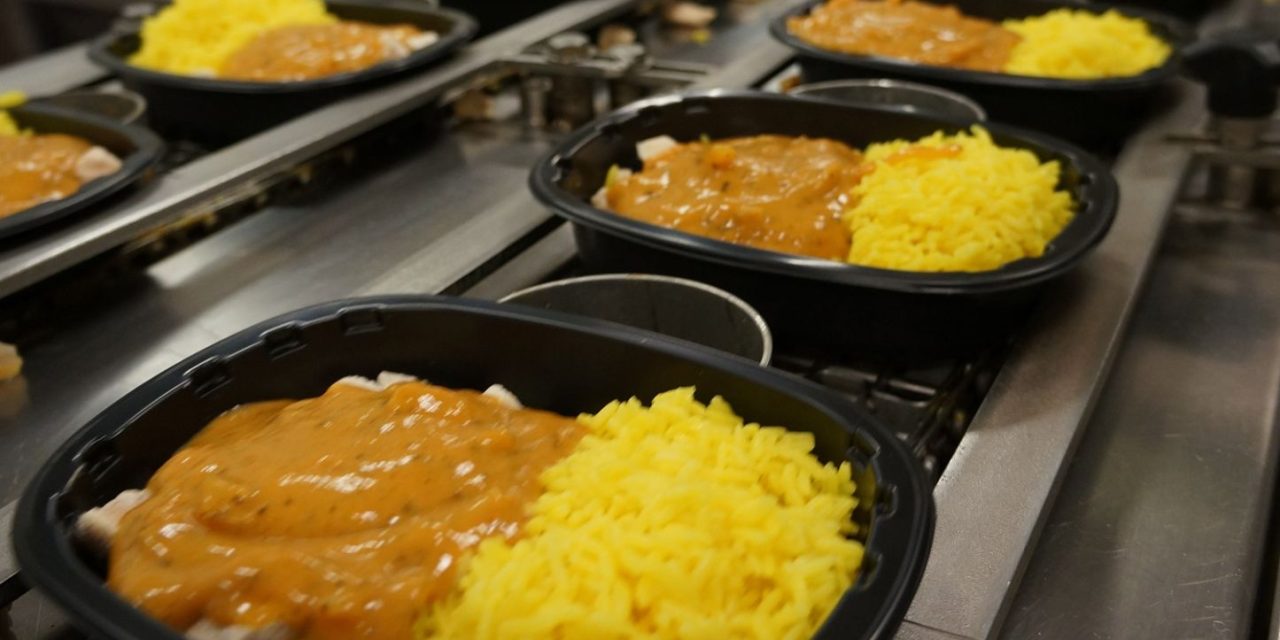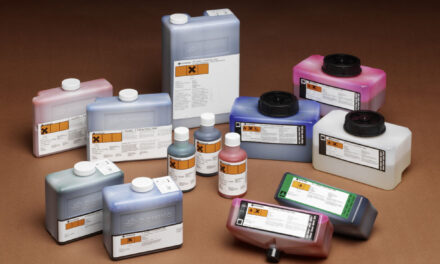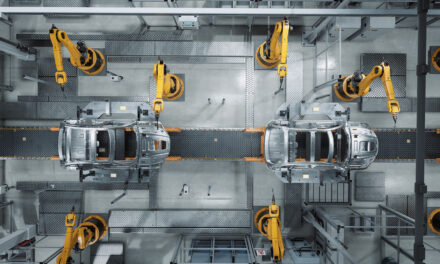Chilled and frozen convenience foods typically have more processing phases than any other food item. Although catching contaminants at the start of any food processing line is the most cost-effective solution, it is critical to assess and regularly review production risks in full context. Ensuring there are no HACCP gaps and that all of the essential inspection points are covered.
Phil Brown, Managing Director at Fortress Technology Europe examines the benefits of having a longer-term strategic investment plan; the hidden and frequently overlooked risks on pre-prepared food processing lines; ways to prevent, eliminate or reduce microbiological, hygiene and physical contaminants; and how to spread machinery inspection assets out across production lines so there are no HACCP-holes.
Rise of the recalls
“Zero brand recalls in the past does not mean immunity to future threats,” cautions Phil. After food safety, most food manufacturers rank ‘company reputation’ their most pressing concern. A product recall can cost upwards of £1 million, with one study finding that 55% of consumers would temporarily switch brands following a food recall. These issues can be safeguarded by being strategic when selecting high-contaminant-risk checkpoints and inspection equipment.
In the 2023 UK Food & Drink Federation State of the Industry report, changes in underlying production costs meant that over 60% of processors said they cancelled or put investments on pause. With innovation being cited as key to future competitiveness, 52% of those surveyed said developing new manufacturing processes was a top priority. Adjusting these processes without performing a comprehensive survey on how this might impact current CCPs could potentially expose manufacturers to more recalls.
Whenever there is a change in a process or packaging, risk professionals should revisit inspection protocols and hypothetical contamination scenarios to look at potential holes in the value chain. Even when there’s no significant change, food processing inspection risks should be reviewed every 12 months as part of a defined HACCP assessment.
Potential issues can be safeguarded by being strategic when selecting high-contaminant-risk checkpoints and inspection equipment.
Convenience without contaminants
An inspection system can be integrated almost anywhere along a prepared food processing line. Most commonly, processors will choose end-of-line checkweighing and contaminant inspection technology after all the elements that make up a meal have been combined, cooked and packaged. Functioning as a final safeguard, at this phase there is virtually zero possibility of a new contaminant being introduced. However, if products are rejected, the costs incurred as a result of wasted food, labour and packaging can be exponentially higher.
With an average ready meal, there can be more than eight production steps between sourcing ingredients to packing, and more than five different product components each requiring, cleaning, peeling and inspection, slicing, cooking, quality inspection, flavouring and finally weighing and packing
Contaminants, including metal, may be present in incoming raw ingredients. It’s common for prepared food manufacturers to have an extensive supply chain comprising farmgate and agricultural suppliers. Typically, more raw ingredients involved, the more opportunities for contaminants to be introduced.
Metal remains the most likely contaminant in convenience food lines. This is, in part, due to high levels of automation in production plants, for example, sieving and mixing raw ingredients, rolling, cutting, scoring, trimming, mincing, and grinding flavourings. Bones in meat products may go undetected. If processing equipment is not properly maintained, it also augments the risk of metal parts or flakes simply breaking off onto products.
The final contaminant risk is biological pathogens. Bacteria multiplies every 20-30 minutes depending on the conditions, preferring high protein foods in liquid form. For ready meals that include soft meats or gravies, it’s important to integrate hygienic, easy-to-clean inspection systems that prevent cross-contamination.
Catch before you cook
When assessing risks, consider the product application. For example, the production process of a ready-made meat pie can include preparing vegetables, cooked meats, gravies, and a pie crust. With each being individually cleaned, sliced, or weighed, leaving the inspection until the end could result in significant lost profits. Not just from wasted food and packaging, but also labour and operational costs.
With dry ingredients, for instance uncooked rice or pasta, processors will often install a large gravity style inspection configuration upstream.
Additionally, most food processors inspect incoming ingredients such as flavourings, vegetables, and meats, before the processing stage. At this CCP, a large bag metal detector is typically used.
Performing supplier weight checks at this early phase of processing is also advisable. Bulk checkweighing machines can be utilised to verify the weight of incoming ingredients in formats up to 50 kgs., and efficiently manage return rates.
With wet raw ingredients, i.e. meat, a conveyor metal detector is often installed at the start of the processing line. This ensures that no metal is fed into the grinder where it could damage equipment and also be fragmented into smaller parts that are more difficult to detect and remove.
In-line inspection
Although Metal Detectors inspect for the most-likely contaminant risk, X-Ray equipment may be utilised to detect non-metallic contaminants, e.g. bones. This is more common for premium meals or prepared foods targeted at young children or the elderly.
Processed liquids, pastes, and soft meats can be passed through a pipeline Metal Detector or X-Ray prior to mixing with other ingredients. To avoid the spread of foodborne pathogens accumulating in industrial processing environments and avoid cross-contamination, a pump pipeline should be designed with minimal places where meat residue, water ingress and bacteria can build up and potentially get embedded in pipes and crevices. These should be able to withstand high-pressurised washdowns after every product changeover.
Additionally, prepared meals featuring specific portions of individual ingredients may benefit from an In-Line Checkweighing system. Used for product applications like pastry casings, pizza dough, or ready-made meatballs, these machines help to ensure portions are the correct amount, weight and size.
Evenly-spread inclusions
Where presentation is a critical differentiator, a consistent spread of inclusions conveys quality, as well as providing layers of taste and texture. Rather than sieving or scattering dry free-flowing products onto applications manually or using waterfall style dispensers, a Loss-In-Weight control system and feeder helps prepared food manufacturers save money by controlling the distribution of inclusions.
Installed prior to packaging but before the final inspection point, these innovative checkweighers can
apply cheese, toppings, breadcrumbs and other garnishes, as well as coat products in spices and herbs. Phil highlights: “Automating this process leads to considerable savings on what is a highly-repetitive, labour-intensive task. For example, by hand, it is impossible to maintain a consistent 1 gram dispensing rate.”
End-of-line safeguards
The number-one requirement for all food manufacturers is to ensure products are safe for consumption. Inspecting products after packaging using an end-of-line Metal Detection and/or X-Ray system is the most important CCP. It is also a retailer COP requirement.
The most common high-risk contamination culprit in food processing remains metal. However, X-Ray machines, including X-Ray pipelines may be advisable if there are specific risks. Foil packaging, such as metal trays, may influence the type of machine selected too. Phil clarifies: “Both X-Ray and Metal Detection systems offer distinct advantages. A manufacturer always needs to factor in their biggest contaminant risks. It’s equally critical to understand that product effect for each type of meat – minced, large joints, cooked, frozen, etc. – can vary and behave differently in a Metal Detector.”
Before shipment, processors of prepared foods also need to verify their products are the correct weight in order to comply with global Weights and Measures Regulations. A Checkweigher can be integrated with both Metal Detectors and X-Ray to ensure each product meets the nominal weight. Using a retail-spec combination systems can also ensure compliance with individually-defined COPs. Mounting a Checkweigher on the same conveyor as a Metal Detector or X-Ray results in a far smaller footprint than stand-alone units would occupy.
Where there might appear to be a need for multiple machines to cope with the increase in upstream output, Fortress recommends closely examining the options. For example, could a multi-lane system offer a better return on investment in a smaller footprint? Is it possible to channel multiple product lanes through a larger aperture? What sort of reject system do you require?
Robust recordkeeping
Collating live OEE data and reporting results directly to QA and technical personnel is increasingly imperative on fast-moving food processing lines. For traceability and audit purposes, records must be retained in order to verify that each system is performing to UK retailer COP standards and to prove that inspection procedures are being followed consistently and correctly. Additionally, unannounced or virtual audits mean that documentation needs to be readily available at all times.
Advanced software enables fast, reliable and easy product set up and reporting. To assist, Fortress automatically pre-programmes every UK retailer COP that exists into the machine menu. These standards stipulate what type of inspection system should be used, how it should ensure rejected products are removed from the line, how the system should ‘fail safely’ and target sensitivities for different Metal Detector and X-Ray aperture sizes.
Automatic testing is also advisable. Used on pipeline, gravity and conveyor Metal Detectors, one of the key benefits of automatic testing is food safety and QC standards are maintained, in many cases improved upon, without compromising production. The results from tests are automatically logged and digitally stored for GFSI audits.
Stay strategic
HACCP guidance states that critical control points (CCPs) should be located at any step where hazards can be prevented, eliminated, or reduced to acceptable levels. Every food processors’ needs are different. The same applies to products.
Rather than looking for patterns, examine potential CCP-holes. This is even more critical if a production process or packaging is changing. An annual HACCP assessment – a requirement for most convenience food facilities – will help to ensure all essential inspection points are covered and, most importantly, retail-compliant.




